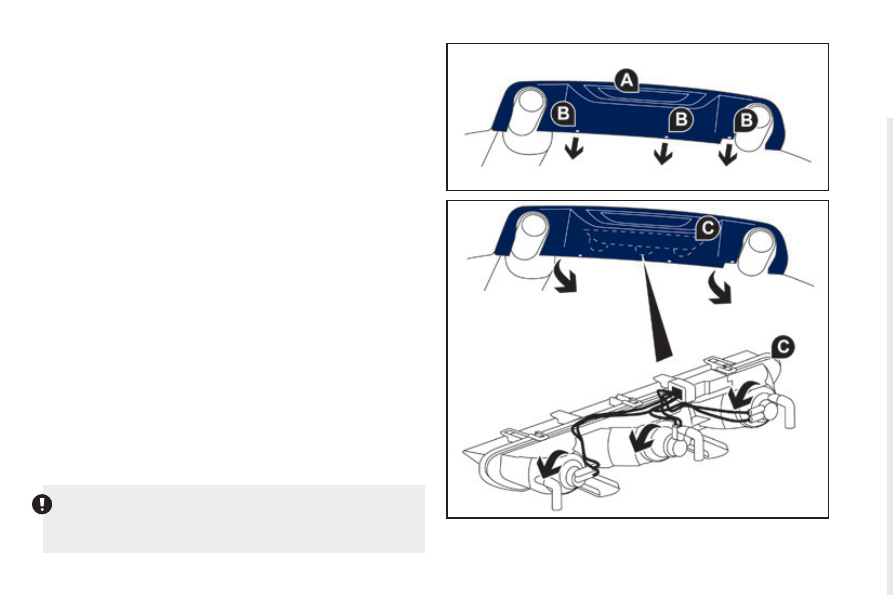Peugeot RCZ (2015 year). Manual - part 12

8/
PRACTICAL
INFORMA
TION
175
RCZ_en_Chap08_info-pratiques_ed01-2015
Version with symmetrical twin exhaust tailpipes
The bulbs on these two types of lamp are changed by partly removing
the lamp unit A in the rear bumper:
F
using a screwdriver, remove the 3 fixing screws B located under the
vehicle,
Take care not to touch the silencer; risk of burns, if you
change the bulb immediately after switching off the ignition.
F without forcing, lower the rear part of the lamp unit for access to the
bulb holders C,
F
turn the corresponding bulb holder a quarter of a turn then remove
it towards the front of the vehicle,
F
turn the bulb one quarter of a turn and change it.
To refit, carry out these operations in reverse order.